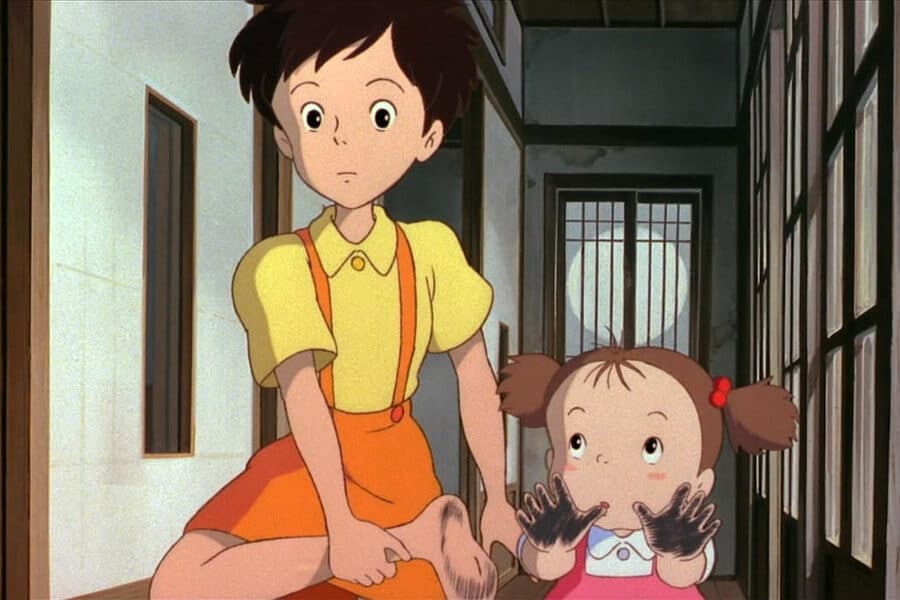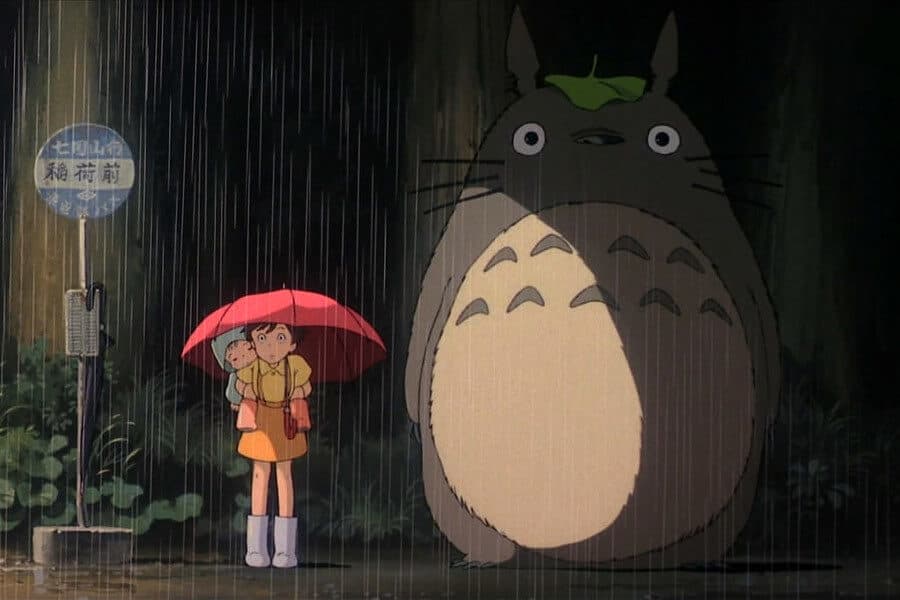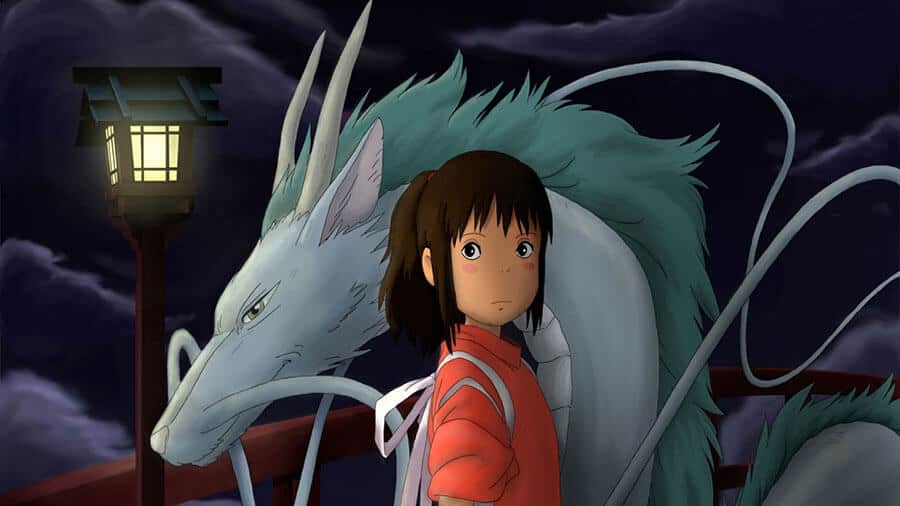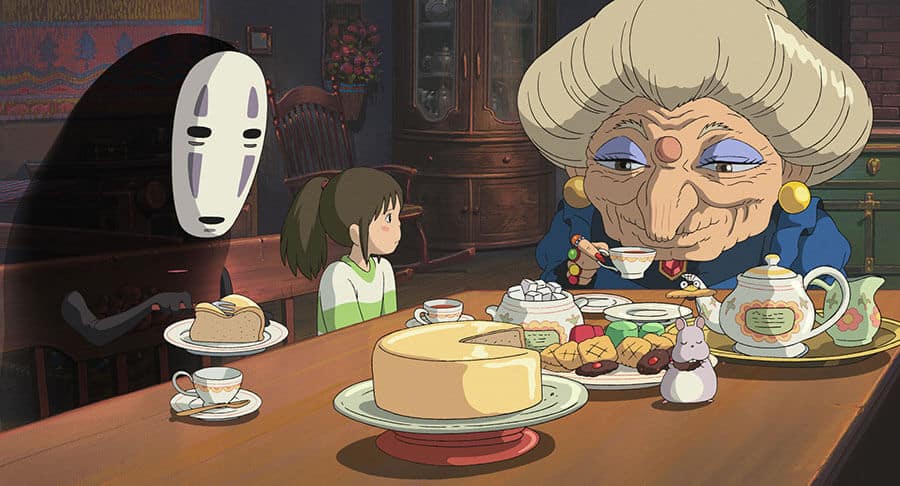Japan is one of the most exotic countries in the world, a place where every single ritual, each stage of social position is connected with ancestors by its historical roots. Cinema production in Japan is also soaked in the daily routine and mindset of the country where `the Sun rises`, as the Japanese like to say. Japanese cinema is filled with fascinating stories about culture, birth, life, and death, which we will explore together in our special cycle of articles about the Japanese movie industry. In this article, we will talk about Hayao Miyazaki.
A child always lives in everyone
Talking about Asian cinema, we cannot overlook another genius, Hayao Miyazaki. His works are not just children’s cartoons, but histories with profound sensibilities, sometimes not entirely meant for kids.
Nonetheless, Miyazaki has been willing for us to see things as small children might, even though his viewers might be 30, 40, or 50 years old. After all, a child always lives in everyone. Naughty, dreamy, winged. However, every single story shows us how Hayao rises up his and our emotions. The agendas of cartoons change together with world accepting and how we act our age: from children views to mature characters.
With this intention a huge review about Hayao Miyazaki role will be divided into two parts. Therefore, this article covers the topic of childish feelings. Particularly, how the brightest animations – `My Neighbor Totoro` and `Spirited Away`– combined the imaginary world for each of us and preparation to live as an adult. Let our trip begins!
The immersion into childhood memories
A child sees this world as a fascinating trip, filled with many fantasies, imaginary characters, with protectors and monsters. At the same time, all children perceive with purity and sincerity. Everyone knows who they want to be in the future.
Still not completely obscured by stereotypes, children radiate love and joy. They strive to conquer the peaks, sincerely believe that miracles abound. What’s left from childhood in us? When the whole world is no longer a cave with dragons, and clouds are not, in fact, a candy floss? Where did the enthusiasm go, while the world has not changed at all?
Thus, Hayao`s cartoons are a deep immersion in the memories of childhood, but with a projection into serious, sometimes philosophical themes. And it is probably more appropriate to look through the eyes of a ten-year-old child, because the same romantic and adventurer, a little boy called Hayao, created them.
Why fear and safety are always beside in `My Neighbor Totoro`
Miyazaki’s cartoons show subtly how a small child perceives the world, as in the animated film `My Neighbor Totoro`. Being naturally stressed and afraid, a child is always looking for protection, as from the protector spirit of the forest, Totoro. Moreover, for small kids every creation, even from mythology or imagination, is real and could be its own hero to be safe.
Hayao Miyazaki shows a family, where a father and two small daughters are forced to move from Tokyo to a village. Mother is ill and is treated in a hospital. For the girls, this is a doubly stressful experience, when the most important defender – the mother – is in danger, and there is nobody to rely on. Moreover, changing the location of the home is also a risky time for a small consciousness.

They took it as a wake up call, and unknown forces concentrate at the periphery of what is comfortable and familiar. We know that a child perceives parents, especially mom, as an ideal of protection and peace. And if, for certain reasons, the connection between the parent and the child is not broken, this feeling might persist throughout life. But it is uniquely challenging if something happens to mom, and for a child this could also mean a complete loss of fearlessness and then each event brings enormous measures of fear.

There is a desire to find someone to protect you from the world and its cruelty. Then fictional friends may arise, also faith in spirits and good drums, as in a cartoon. Reality can become complete in a child’s imagination, which is limitless.
Spirits as symbols of braveness
When you need to explore the world, such confidence is necessary. Therefore, the spirit of the forest, Totoro, appears in the cartoon. But Japan is a country of the highest spiritual presence, even though the world is changing now. It has still preserved the foundation of ancestors and faith.
A belief in spirits helps to cope with inner anxiety. And also, when you are a kid, the fantasy itself creates a safe place as something big, soft, fluffy, kind, a place where you can feel warm and fall asleep in a calm atmosphere. And the special symbol of the forest, as ancient protector, perfectly complements the theme of ancestors and their connection with nature.
However, as the plot evolves, Satsuki, the elder daughter, becomes increasingly brave and takes on more responsibility. When the sister May disappears, she shows herself a brave girl, and goes alone to find her. If, for adults, this may seem an expressive part of the story, for a child it is a feat. This cartoon also teaches the viewer how to notice the reaction of children and their behavior, to remember your own childhood and get close, not so much with your family, as with your inner child.
How `Spirited away` teaches to appreciate our lives from the first episode
`Spirited Away` is a cartoon that I`ve seen twice. For me, the main idea is to explain the depths of Japanese culture and how children are willing to understand it. Especially respecting ethical matters such as relations with others, kindness, mutual understanding, and support.
A particular question in Asian countries is the meaning of death. As I wrote in the previous review, Japan is a place where the culture of the ancestors and their connection with the world of the living create a solid foundation for faith. Thus, the topic of death and respect for those who have passed away, as well as living a decent life, are the basics for Eastern philosophy.

The cartoon begins with the fact that the family moves to a village where they all must start from scratch. By mistake, the father turns off onto a bad road and speeds up and almost gets into an accident. A collision with an ancient stone statuette of the Deity saves his family from certain death.
I have thought about what that episode really means? For instance, if we know that faith in being saved by God is a constant, the notion of the death accident gets more real.
The car could easily fly off a cliff or run off the road. Then the whole family would perish. And the phantom of the Divine city itself illustrates one way of leaving the real world. And more so, is the dark tunnel a way of transition into celestial matter? Isn`t it? However, if we come up with the notion that the heroes are saved, then a stone statue is just a stop signal to revise your actions. Dad manages to slow down in time, and thanks to magical forces. After situations like this, people always think about the meaning of life and how they had lived it before.
Material goods will not pay for spiritual greatness
But meanwhile, Miyazaki uses a great technique to convey the value of each person through animation. For little Chihiro, the kingdom of the Gods gets a disciplined character. First of all, stories about ancestors and Gods have a profound effect on how children accept the presence of majesties. This is the beginning of developing respect for elders and gratitude for their help, and what is wrong and right. Respect for others and their work. The ability to make real friends and maintain a good attitude towards other people, even if they are not doing well.
Chihiro discovers her own faith in a friend, the dragon-boy Haku, her peer. After all, each child can find the personal good in which he or she believes. It becomes even more fun with children the same age. Also another reason that we could be taught is the need to remain ourselves no matter what happens. In the episode with the sorceress, Yubaba decides to cheat her and choose her parents from a bewitched herd of pigs. Deception is a manipulation; and a person, especially a child, can easily imagine being a slave. But Chihiro does not believe in the tricks of the evil Yubaba. This moment teaches you to keep your wits about you. And do not forget that every child copies behavior from his parents. And for adults – this is a great opportunity to understand that unconscious actions affect the feelings of the child.
Summing up what Hayao has been willing to say: live not forgetting that we are all children, happy and emotional. Afterwards, we can share our love, absolute sincerity and happiness only in connection with our inner child. Perhaps this is the theme that Hayao Miyazaki has been conveying to us all along!
Photos: MovieStillsDB
Read more reviews from the author.
Deconstructing the Film “Departures” In a New Chapter of Japanese Cinema
Support us!
All your donations will be used to pay the magazine’s journalists and to support the ongoing costs of maintaining the site.
Share this post
Interested in co-operating with us?
We are open to co-operation from writers and businesses alike. You can reach us on our email at [email protected]/[email protected] and we will get back to you as quick as we can.









